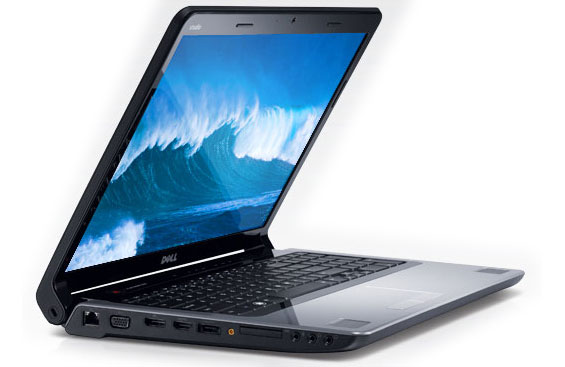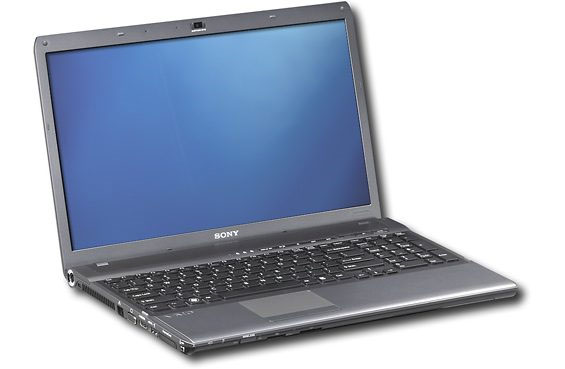Mobile Buyers' Guide: 14" and Larger Notebooks and DTRs
by Dustin Sklavos on June 30, 2010 12:53 AM ESTVideo/Multimedia Workstation: Dell Studio 17
If there's one category we know particularly well and have exhaustively researched—if only for personal reasons—it's this one. The aforementioned griping about ExpressCard and FireWire returns, substantially narrowing the field. A need for a high resolution screen narrows it further, and at the end of the day we're left with just two companies seeking to fill this particular niche: Dell and Sony.
Our initial leanings went toward Sony's F series notebooks. These sport Core i7 quad-core processors, can be custom-ordered with 1080p screens (or even found in retail with those screens), and have all of the needed ports and expansion abilities. On top of that, they're just attractive machines and the pricing is fairly reasonable. The only major complaint that can be levied against the F series is the strangely anemic GeForce GT 330M Sony chose to equip them with. The preceding Core 2-based series used a Mobility Radeon HD 4650, making the move to the GT 330M lateral at best. And since the F series uses quad-core i7s, there's no integrated graphics to at least try to justify the GT 330M through Optimus.

Unfortunately for Sony, Dell has an ace in the hole that they just can't touch: the Dell Studio 17 may not have been updated with the refreshed mobile Core i7 chips yet, but that's only a matter of time, and we'd gladly take the performance hit for one of Dell's RGB LED-backlit 1080p screens. If you're doing any kind of color-sensitive media work with the notebook, that screen is going to pay big dividends. Dell doesn't charge an unreasonable sum for the upgrade either: $150 isn't that much to ask for one of the best looking screens you can find on a notebook. Given how dismal the quality of many modern screens have become, and how vital a good one can be for any kind of serious media work, Dell clinches this recommendation. If you want a media workstation, look no further than the Dell Studio 17.
Video/Multimedia Workstation Runner Up: Sony F Series

Of course, if you don't want to shell out for the RGB LED-backlit 1080p screen in Dell's Studio 17, the Sony F series is mighty attractive on its own. The line was recently refreshed with the updated Core i7-740QM, and can be had with a 1600x900 screen for just $1000. That's not bad at all, and it's easy to custom order a fairly reasonable machine from Sony's site. It comes with the standard 4GB of DDR3, a 320GB hard drive, and the aforementioned underwhelming but still decent GeForce GT 330M. At just a grand for an excellent piece of video editing hardware, the Sony F series is very tempting indeed.










63 Comments
View All Comments
mnmr - Saturday, July 17, 2010 - link
FTA: "The 5850 is easily one of the fastest mobile GPUs available, and MSI makes great use of it with a high-resolution 1680x1050 screen.".Stop eating the manufacturers BS - that is not a high resolution display. FullHD (1920x1080) seems to be the "standard resolution" for 17" laptops, so anything less should be axed as "poor" rather than applauded.
Even FullHD is not high-resolution in my book, as 1920x1200 displays were the standard for high-end notebooks as much as 5 years ago.
Where's the laptop that has a true high-resolution display, like 2560x1600, or at least something beyond 1920x1200? Even the 18"+ laptops only have FullHD diplays. Truly sad that nobody pays attention to resolutions anymore :-(
Mezmorki - Tuesday, July 20, 2010 - link
Sure, 1680x1050 isn't "high" resolution compared to the 1920x1200 of years gone by, but it's better than a lot of offerings today. I recently ordered a GX640, and one of the MAIN reasons why MSI was in the running is because they still offer 16:10 aspect ratio screens, although their next gen lappy's have switched to to 16:9 like everyone else.Yasha613 - Thursday, July 22, 2010 - link
That's the problem, it's like getting scraps and being told we should be thankful for the offering.Things have actually gotten worse than stagnation, it's gone backwards to promote a television standard that should be like that of buying a digital camera anymore. Does anyone purchase a digital camera that totes the wonders of being able to take photos at a max resolution of an TV or HDTV standard? No, of course not, in fact anything that can't do near twice that is scoffed at.
Why and how did high-end laptops become the exception?